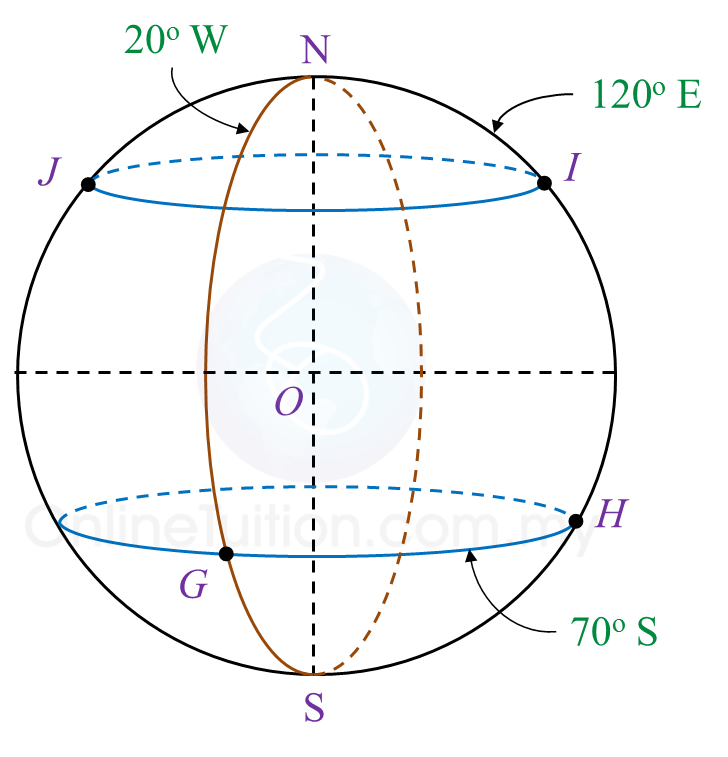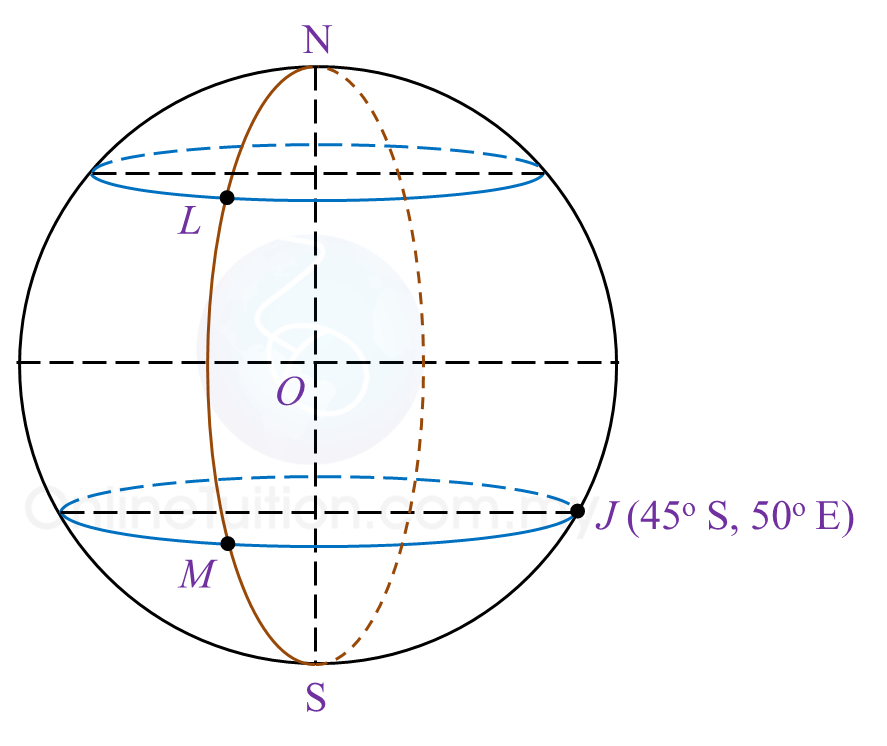Question 9 (12 marks):
A(25o N, 35o E), B(25o N, 40o W), C and D are four points which lie on the surface of the earth. AD is the diameter of the common parallel latitude 25o N .
(a) Find the longitude of D.
(b) C lies 3300 nautical miles due south of A measured along the surface of the earth.
Calculate the latitude of C.
(c) Calculate the shortest distance, in nautical mile, from A to D measured along the surface of the earth.
(d) An aeroplane took off from C and flew due north to point A.
The total time taken for the whole flight was 12 hours 24 minutes.
(i) Calculate the distance, in nautical mile, from A due west to B measured along the common parallel of latitude.
(ii) Calculate the average speed, in knot, of the whole flight.
Solution:
(a)
Longitude of D = (180o – 35o)W
= 145oW
(b)
(c)
Shortest distance of A to D
= (65o + 65o) × 60’
= 130o × 60’
= 7800 nautical miles
(d)(i)
Distance from A to B
= (35o + 40o) × 60’ × cos 25o
= 75o × 60’ × cos 25o
= 4078.4 nautical miles
(d)(ii)
A(25o N, 35o E), B(25o N, 40o W), C and D are four points which lie on the surface of the earth. AD is the diameter of the common parallel latitude 25o N .
(a) Find the longitude of D.
(b) C lies 3300 nautical miles due south of A measured along the surface of the earth.
Calculate the latitude of C.
(c) Calculate the shortest distance, in nautical mile, from A to D measured along the surface of the earth.
(d) An aeroplane took off from C and flew due north to point A.
The total time taken for the whole flight was 12 hours 24 minutes.
(i) Calculate the distance, in nautical mile, from A due west to B measured along the common parallel of latitude.
(ii) Calculate the average speed, in knot, of the whole flight.
Solution:
(a)
Longitude of D = (180o – 35o)W
= 145oW
(b)
(c)
Shortest distance of A to D
= (65o + 65o) × 60’
= 130o × 60’
= 7800 nautical miles
(d)(i)
Distance from A to B
= (35o + 40o) × 60’ × cos 25o
= 75o × 60’ × cos 25o
= 4078.4 nautical miles
(d)(ii)
 Diagram 8
Diagram 8






